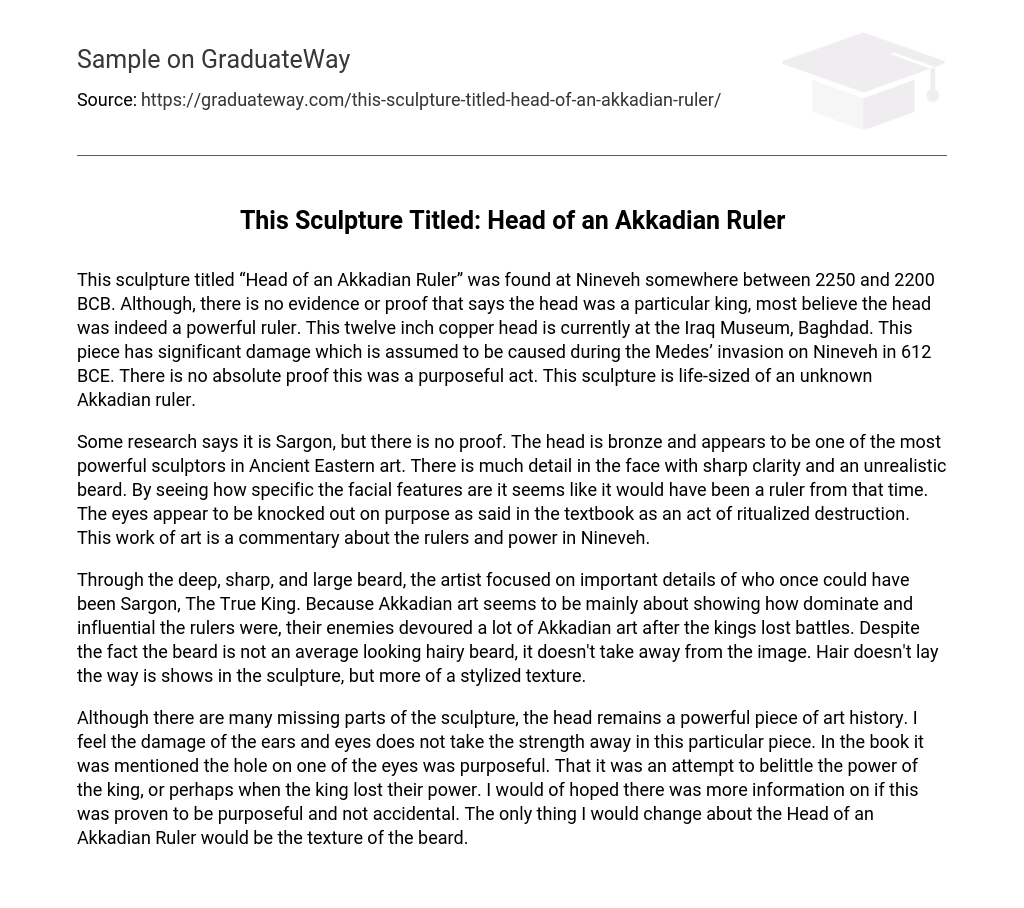The sculpture known as “Head of an Akkadian Ruler” was discovered in Nineveh around 2250-2200 BCB. While there is no concrete evidence identifying the specific king, it is widely believed to depict a powerful ruler. Measuring twelve inches in height, this copper head is presently housed at the Iraq Museum in Baghdad. It bears substantial damage, presumed to be a result of the Medes’ invasion of Nineveh in 612 BCE, though intentions behind this destruction remain uncertain. This life-sized sculpture represents an unidentified Akkadian ruler.
There is some research suggesting that the bronze head may be of Sargon, but there is no conclusive evidence to back this claim. This sculpture holds great significance in Ancient Eastern art and is recognized for its intricate facial details, notably the distinct and exaggerated beard. The precision in depicting these features suggests that it portrays a ruler from that time period. It should be noted that the deliberate removal of the eyes has been interpreted as a ceremonial act of destruction, as mentioned in the textbook. Ultimately, this artwork offers commentary on rulers and power dynamics in Nineveh.
The artist focuses on the important details of who may have been Sargon, The True King, through the deep, sharp, and large beard. Akkadian art primarily emphasizes the dominance and influence of rulers, but much of it was destroyed by enemies after the kings lost battles. The beard in the sculpture does not appear like a typical hairy beard, but rather a stylized texture.
Despite the absence of certain components, the significance of the Head of an Akkadian Ruler in art history remains substantial. The sculpture’s damaged ears and eyes do not diminish its overall artistic prowess. As explained in the book, one eye features a deliberate hole, potentially signifying a decline in the ruler’s authority or representing their loss thereof. It would be advantageous to obtain more clarification on whether this was intentional or accidental. The only modification I would make to this artwork pertains to the texture of the beard.





